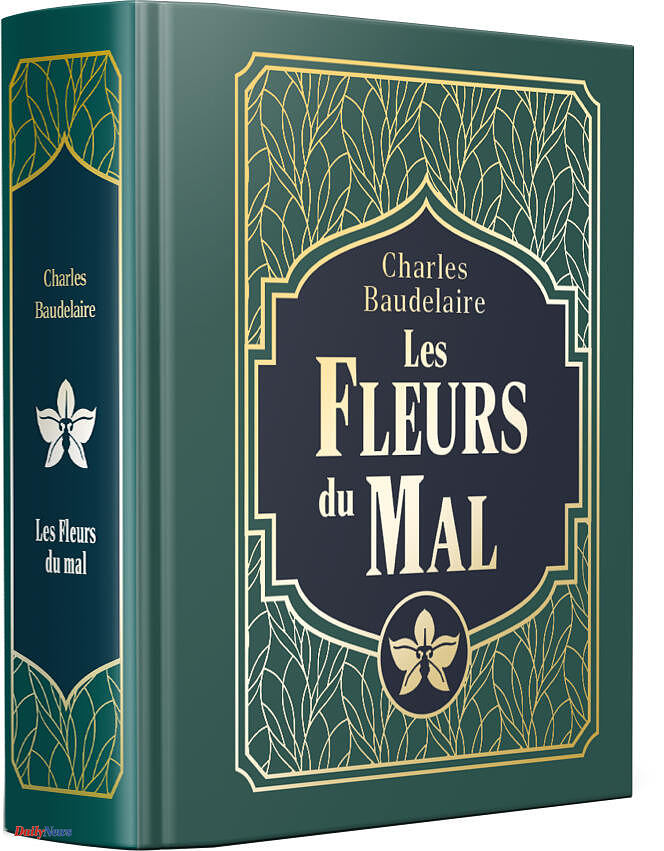Certain words, certain books have the power to change a life, including that of their author. The Flowers of Evil are meteorites with a dazzling journey that impact the being, its desire and its senses, despite the times. Although their genesis was long and their publication tormented, their purity, their sensual force and their dark harmony have never ceased to mark and bewitch the attentive reader. Because Les Fleurs du mal has nothing of an anthology but everything of a fresco. These are the notes, the movements, the silences, the sighs of an intimate melody. These are theatrical and tragic, obscure or peaceful images of an immense desire, of an assumed pleasure echoing its time.
For twelve years, Baudelaire skilfully composed, orchestrated, ordered, finding each its role and its right place, never ceasing to reveal the dualities of being, from secret loves to lost hopes, from the luminous ideal to the dark design , where good and evil face each other in a discreet but universal confidence. In 1845, Baudelaire announced his project. Ten years later, only eighteen of his poems appeared in the Revue des deux mondes. Criticism and justice are already attacking two texts deemed immoral – Man and the Sea and The Denial of Saint Peter. Then, in 1857, when the one hundred and twenty poems gathered in the first edition of Fleurs du mal appeared, the scandal broke out. The censors of the society of the Second Empire, the press and the courts condemned the work. Le Figaro and its vehement director Hippolyte de Villemessant describe the texts as “charnel and slaughterhouse poetry”. The General Directorate of Public Security sees it as “the expression of the most revolting lewdness”.
A trial then opens for the crime of contempt of public morals and good customs, at the end of which the Attorney General Ernest Pinard, who a few months earlier filed charges against Flaubert's novel Madame Bovary for its realism, accuses Baudelaire’s poetry of lacking “the sense of modesty” and of multiplying “lascivious paintings.” The poet and his publishers were forced to pay a fine of 100 francs each and remove six poems from the collection if they wished to continue its sale in Paris. For Baudelaire, the entire architecture of his work is destroyed. By complying with court decisions, he then decided to go further and had all copies of Les Fleurs du mal removed from bookstores. And to circumvent censorship, it will only be more radical.
Duality of aspirations
For four years, the poet recomposed his collection, reorganized the order of the texts, added an additional section (Tableaux parisiens) to the five already existing (including Spleen and Ideal, Fleurs du mal, Révolte, Le Vin, La Mort). From then on, each poem takes on a new color and meaning in the order it organizes. The duality of aspirations is the source and Baudelaire explains it as follows in his notes: “There are in every man, at every hour, two simultaneous postulations, one towards God, the other towards Satan. Invocation to God, or spirituality, is a desire to rise in rank; that of Satan, or animality, is a joy to descend. » This approach to desire, to humans and to the world, concentrates Baudelaire’s aesthetic and ethical issues in poetry.
Traditionally, since the origins of Christianity, beauty and truth went hand in hand. The poet breaks this equation by revealing how the opposites mingle – true, beautiful, ugly, evil, good – combine, complete each other without the human soul losing its salvation. So the words govern, their music carries and their color depicts a new, modern world. In the form as in the substance of his work, Baudelaire multiplies the possibilities, embraces the history of poetry as well as the multiplicity of feelings, loves, passions. The artist combines an incredible variety of poetic forms, tries all the lengths of verses, all types of alexandrines, always striving to soften the form to bring in the modernity of his time, stripped of everything oppressive classicism. Also, The Flowers of Evil, in the extent of humanity that they cover and in their learned and sensual writing, are indeed an essential piece of literature.
By collecting the heritage of all romantic poetry, Baudelaire charted a new path. He explains it in a few notes: “Who says romanticism, says modern art, that is to say intimacy, spirituality, color, aspiration towards the infinite expressed by all the means contained in the arts. » Clearly evolving more slowly than Baudelairian genius, French justice will deliver its verdict... in 1949, almost a century later. The Court of Cassation will overturn the conviction of Fleurs du mal, now allowing the work to open the eyes and minds of its readers to the real beauties of life and perhaps change their lives. This is the response of poets to the despair of a century.












